Event marketing involves promoting events and attending or holding them to advance your broader marketing objectives. Leveraging events such as seminars, webinars, and tradeshows creates exciting opportunities for branding, sales, and relationship-building before, during, and after events.
However, events can be a significant investment for a small business, so choosing the right ones and making the most of them is critical. There are several considerations when developing your event marketing strategy: Do you attend, sponsor, or host events to grow your business? How do you effectively promote, build your customer base, and boost sales through these activities?
In this article, we discuss what is event marketing, various event types, planning your objectives, budget and timing, promotion and tracking, and follow-up as a part of your overall marketing strategy.
Event Marketing vs Event Promotion
Event marketing is a broad field that covers both event promotion to boost attendance and using events to promote your business. It’s important to distinguish between “event marketing” and “event promotion.”
Event Marketing | Event Promotion |
|---|---|
Organizing, sponsoring, or attending events (virtual or in-person) to promote their business and build opportunities | The promotion of a particular event or series of events to maximize attendance using various channels not limited to advertising, email, social media, and personal outreach |
Event Formats & Modes of Participation
Before getting into all the different types of possible events and how to approach them, it’s important to understand basic event formats and how you participate in them.
Event Format | Event Participation |
|---|---|
|
|
Event Formats: Virtual, Hybrid & In-person
Since the pandemic, the rise of virtual and hybrid events has greatly expanded the reach and possibilities for event marketing. In terms of budget, virtual events are very cost-effective because they may eliminate travel and entertainment expenses such as plane tickets and hotel suites, or the cost of renting space in a venue.
However, remember that the face-to-face experience of meeting partners and customers in person creates stronger social connections, with intangible benefits for your business and brand in the long run. Combining virtual and in-person events in your overall strategy can magnify the impact of both.
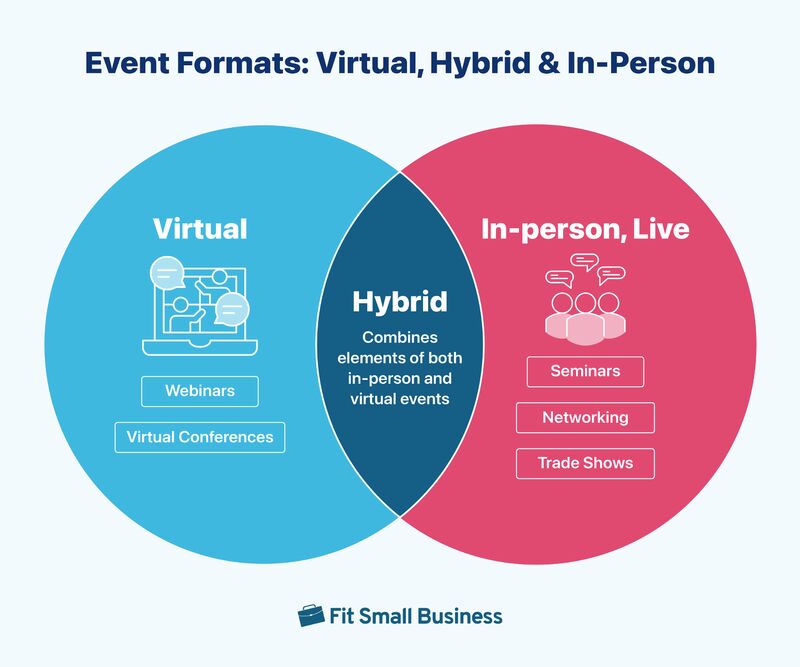
Events Modes of Participation
As a small business with a limited budget, you may only wish to attend or host a booth at large events like tradeshows. However, organizing smaller events such as mixers or webinars can also be beneficial. Event sponsorship can include attending the event or simply investing in event materials and mentions without setting foot at the event itself.
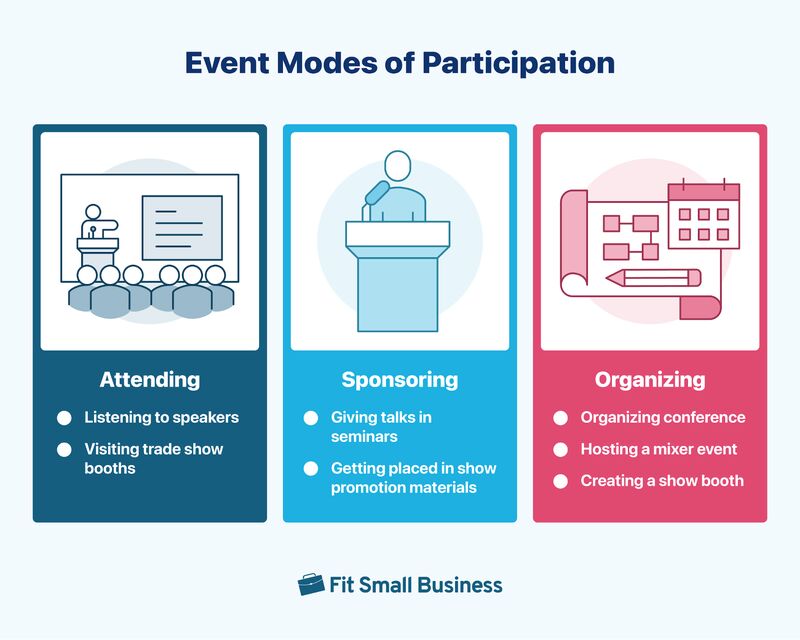
How to Create an Event Marketing Strategy
The following eight steps to creating a strong event marketing strategy are helpful whether you’re planning to attend only one event this year or organize several events. Your time is valuable, and making the most of the time and effort spent on events is always worthwhile.
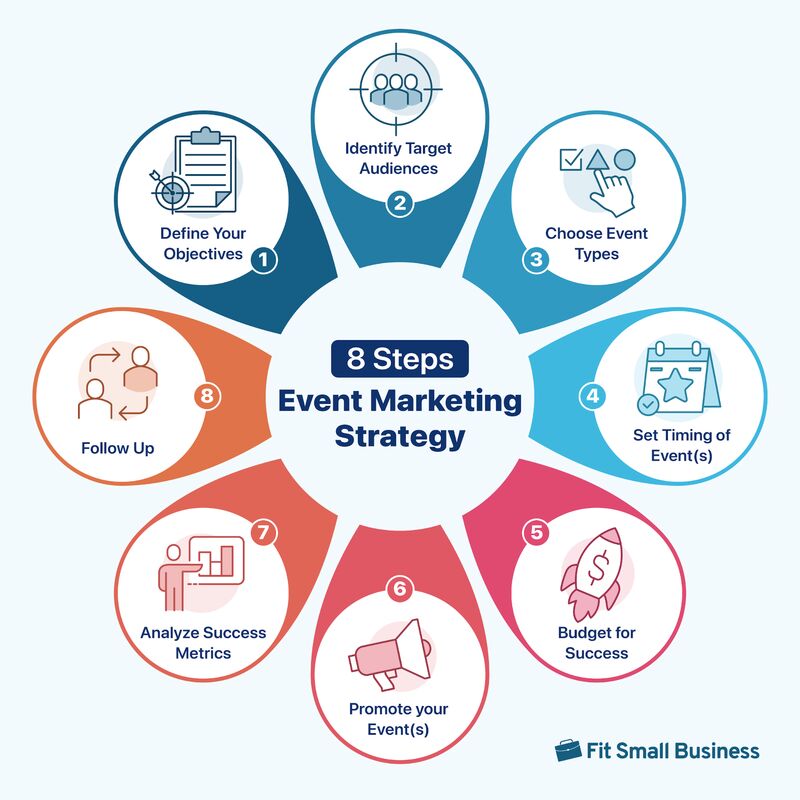
Step 1: Define Your Event Marketing Objectives
So why organize or even attend events? While the reasons may differ by industry, most businesses share common goals regardless of their sector. The key distinctions arise based on whether you are organizing, sponsoring, or simply attending the event.
Of these three, attending events is almost always the most cost-effective option. They are especially effective for marketing and vendor research. But if your objectives are building brand presence, customer, and revenue growth and establishing yourself as an industry leader, consider organizing or sponsoring an event of appropriate scale to your industry and budget.
Step 2: Identify Your Target Audience
If you are organizing or sponsoring an event, understanding your current customers and/or desired audience is important to tailoring the promotion and event to appeal to those audiences. Building one or more customer profiles is essential to defining your event strategy.
For example, for a baby boutique, your audience may skew somewhat towards women of a particular age range (though attracting couples of any gender is a legitimate strategy), and scheduling should work for your audience with what you can probably imagine is the demanding schedule of parents, including school times.
Events are a key part of building your brand presence, and this should be reflected in the promotion and flavor of the event. A strong brand strategy provides the roadmap for incorporating your brand’s unique flavor into the style and purpose of your event. When executed effectively, it will attract the right audience.
Step 3: Choose Your Event Types
The most important consideration when organizing an event is the type and size of the event itself. Your industry has particular best practices and event types that are commonly understood and expected by customers. Store openings in retail, soft launches for restaurants, or exhibition openings for art galleries are just a few examples.
A mix of these event types, carefully selected and timed to coincide with important industry gatherings or your own product and service launches, is the key to a successful strategy integrating events. Consider this overview of event types and the potential mix of these that might work best for your company and budget:
Social philanthropy is often a positive way to participate in events while supporting the local community, especially if the cause or organization you’re supporting resonates with your brand values, mission, and vision. An example would be a pet store cohosting an adoption event with a local animal shelter. These events usually attract the right audience, generate goodwill, and often allow costs and logistical responsibilities to be shared with the organization.
Did You Know?
Breaking out of the box is possible, especially if you are trying to stand out in a creative industry or gain attention from the press. A risky, but potentially exciting possibility is publicity stunts including guerilla marketing or public performance. However, strategic thinking, careful planning, and good taste are all important to succeeding as these tactics are known to go awry or even backfire.
Step 4: Set Your Event Timeline
Timing, as they say, is everything. Ensure the lead time for planning and promotion is appropriate to the scale of your event. Even if you are just planning to walk the show floor at an Expo, for example, let your customers and partners know ASAP so they have an opportunity to attend and possibly meet in situ. This could be meeting at their booth, at a speaker session, or for lunch or dinner.
The media schedule is almost as important as your budget. Announcements and reminders should be repeated regularly to build commitment and excitement in the lead-up to your event. I found as an event marketer that despite sending numerous ads, emails, and social posts, in the days right before a big event, I would just pick up the phone and start reaching out to important customers and partners to secure commitment.
Like a great song or story, the progression of an event with the preparation, lead-up, event, and follow-up follows an arc. Slowly build interest and excitement with your audience, and then in the days before, amp up the anticipation with more rapid communications. Post-event, use your follow-up communications to thank customers, celebrate accomplishments, and set the stage for the next chapter.
Pro Tip: Adjust your timing for in-person vs virtual events.
Virtual events are kinder than in-person events for timing: an event like a webinar can be announced a week or two in advance (longer is better). Because of webinar recording and serving technology, some participants may even choose to stream the event after the fact.
In-person, out-of-town events are immediate and ephemeral. They often require months, or even a year to plan an event like a tradeshow. Whatever the scale of your live event, watch out for scheduling your event right on top of another major event that might pull from the same audience.
Step 5: Budget for Success
Developing a good marketing strategy drives your marketing budget and, in turn, what you can spend on events. Strategy and budget are iterative: you develop a strategy, run the numbers, alter the strategy, and so on. A typical business should look at 8% to 10% of their budget on marketing overall and, of this, 10% on events, so in essence, 1% of your operating budget.
Step 6: Promote Your Event(s)
No matter how you participate in an event, it’s important to promote the event or your presence there to your audience. There are numerous methods of event advertising to announce your participation including website, email, social media, print advertising in newspapers and periodicals, and certainly personal touch and word-of-mouth. Find your favorite event marketing examples, then think about how you could make one of those ideas yours, and take it to the next level.
The number of channels and spending on event promotion should be in direct proportion to the size of the event, your role in it, and financial commitment. If it’s an impromptu after-work mixer, you might be happy to attract 20 to 30 people. But if you are organizing a larger event like a seminar or conference, you may need to rent a venue, cater meals, and bring speakers. Under-promoting and having poor turnout events such as these can be costly—not just financially, but in the impact on company morale and your brand.
Emails, landing pages, and social media are among the time-tested marketing channels for promoting your event to prospective attendees and customers.
If you’re putting on an event, you’ll start with your contact list (ideally managed in your CRM software solution) and use it to build your attendee list. A CRM is an invaluable sales and marketing tool. Leveraging your customer list for promotion and follow-up requires a good CRM for email marketing such as HubSpot or Mailchimp.
Many event management tools integrate CRM solutions directly into their toolset, but if you already have a CRM, use it to create a list of potential attendees to an event, track responses from marketing efforts, and follow up on conversations and sales conversions.
Pro Tip: If you feel your mailing list is inadequate to build the desired level of attendance, purchasing a mailing list is a possible avenue. If you are working with a local marketing company, they might be able to connect you with a reputable mailing list provider.
With direct mail, an every door direct mail (EDDM) service for targeted demographic areas near your event (especially for entertainment-focused or community events) can help you tap a new audience with a reasonably inexpensive direct mail campaign.
Armed with your mailing list or CRM list, you can leverage it to create event awareness through an email marketing campaign. Several announcements over a reasonable period (once a week or twice a month) are acceptable, with the intervals getting shorter closer to the event.
Adding new information or teasers about the event will help keep the emails current and interesting. Make sure to add a registration link to the event, whether on your company site or the event site. Once a prospect or customer has registered, a series of emails can help remind the registrees of the time frame, event updates, etc., to increase excitement and engagement.
You might announce the event on your existing website, particularly on the home page or events calendar. Creating a dedicated landing page (or full site for larger events) can provide additional useful information and functionality. Online registration and/or ticket purchase, if a paid event, venue details, and directions are examples of valuable tools for prospective attendees.
If you announce the event on a website or landing page, you can then link to this page in emails, social media posts, and other advertisements to drive traffic and encourage sign-ups. Using a QR code or NFC (near-field communication) chip (offered by VistaPrint, for example) in a business card or other marketing materials is a great way to take customers directly there.
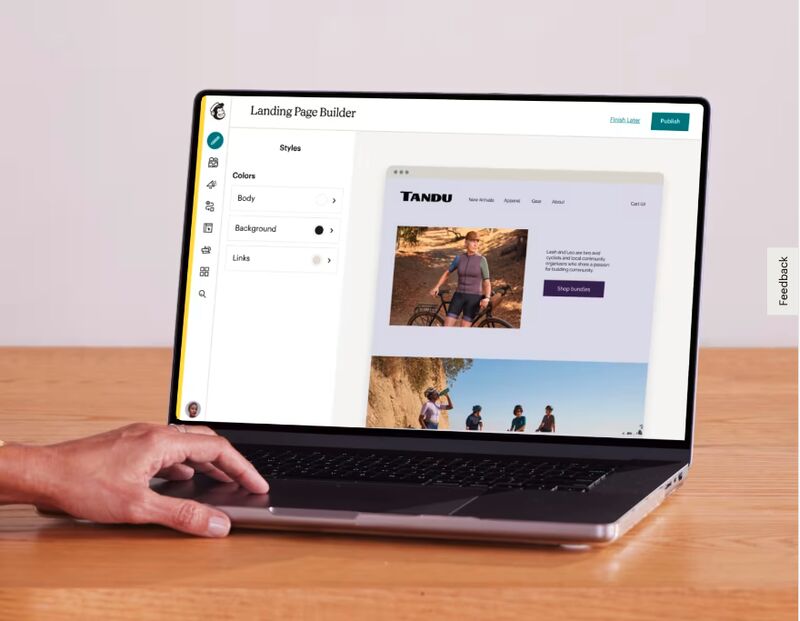
Many end-to-end marketing platforms such as Mailchimp offer specialized landing page builders that integrate with their broader marketing tool suite, including CRM, email marketing, and analytics. (Source: Mailchimp)
PPC stands for pay-per-click advertising, so-called because you only pay for each click your ad receives. PPC ads are targeted to users based on factors like their search and browsing history, demographics, location, and more, often on sites like Bing or Google and social media. They’re effective at gaining clicks, traffic, and leads in a short period.
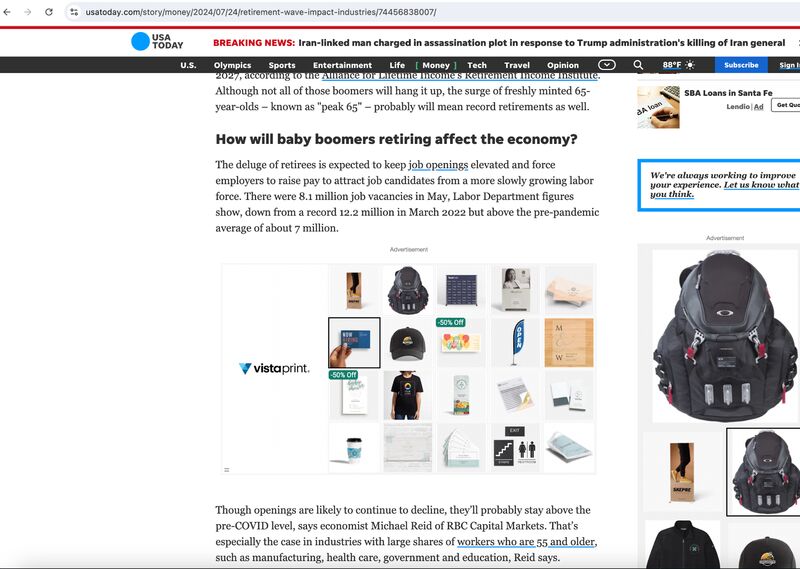
Just browsing my newsfeed, I was retargeted by the company VistaPrint because I reviewed their services on their website for this article. (Source: USA Today)
Pro Tip: Those who visit and leave your event landing page or site might also be a good target for remarketing where online ads are triggered to follow up on other websites viewed by the user and keep the event top-of-mind. This is one of the more advanced marketing ideas for events but can be worthwhile if you plan to continue using the tactic in other areas of your marketing strategy.
Crafting a good press release to announce your event (if newsworthy) and distributing it to appropriate journalists and news outlets is another great tactic. If you need assistance in writing or distribution, many excellent press-release services exist to help you get the word out.
Local cable or affiliates may offer inexpensive local television ad rates for 30- and 60-second spots. A graphics and image-only spot with an announcer is a price-effective format for event announcements. If you have high-quality videos of an annual event from previous years, you can use them in your ad to create excitement. Make sure you have permission or releases from attendees filmed, or post notice of promotional filming at the event.
Additionally, radio spots are a popular way of announcing events, usually in a 15- or 30-second format. Choosing a station that appeals to the intended audience is important. With a musical performance-focused event, for example, this becomes easier as it can be matched to the station’s musical format, but understanding your audience and their demographic and possible musical tastes is another useful insight.
Although more costly than email marketing, direct mail marketing—especially for local events where geographical and demographic targeting can be used—is worth serious consideration. For paid events, a registration discount or coupon can be included, and the tangible nature of a well-designed mailer can inspire an interested prospect to pin it on their fridge or keep it on their desk.
Postcard mailings are a very popular method for promoting events by direct mail. Companies like Postcard Mania, which specialize in postcard design and mailing for numerous small businesses, can help you promote an event and offer continuing direct mail services to your new contacts and customers.
Make no mistake, advertising in periodicals is not inexpensive, especially compared with digital media like email or social. But if the event is significant and the audience needs to be convinced of its value and cachet, there is nothing like a magazine ad that says it’s a class act. Large format print with visuals also offers unparalleled visual impact. Major benefit auctions, art galleries, or performing art center openings are key print advertising customers.
Industry journals for audiences in specialized industries such as medicine, engineering, or law are a consideration for promoting seminars and workshops where such a demographic is a key target for your business.
If you are hosting a booth or a sponsor at a trade show or expo, part of the benefit might be the inclusion of your ad in a preshow publication shared with membership and attendee mailing lists. Such a placement may also be offered a la carte if a large sponsorship package is too costly.

Santa Fe, New Mexico’s Indian Market artist directory and booth guide offers numerous ad placements and sponsorship opportunities for local businesses and smaller happenings within the larger event schedule. (Source: Swaia.org)
Once your event is underway, you’ll want to use signage and display elements to advertise your brand to attendees. At a trade show, you’ll need high-impact but affordable booths and signage that draws in the audience. Local print companies or national printing companies such as VistaPrint can create striking portable trade show display items such as booth items, backdrops, signs, and banners that pack down and travel or ship easily.
Whether attending, sponsoring, or hosting an in-person event, make sure you are well-stocked with marketing materials like business cards, brochures, and other collateral. Companies such as VistaPrint provide a full range of affordable print services for collateral.
A good format for brochures in my own experience in marketing events is a full evergreen brochure about your company in 11×17 format inside a presentation folder. Fold this into a letter-size booklet, and include letter-size flyers or “cut sheets” with specific, timely product information or price lists (if applicable).

Starting with a presentation folder to hold brochures, tear sheets, and business cards is a great way to organize marketing materials. (Source: VistaPrint)
Promotional items, or “swag,” are useful giveaway items such as pens, shirts, mugs, etc. Again, VistaPrint offers a vast range of off-the-shelf items to choose from and can show you digital mockups of your item with your business name and logo before you commit. Tailor Brands and Designhill also offer apparel printing and select collateral. Like all printing, increasing print quantities reduces price, so projecting ahead and buying a sufficient amount for the event, and beyond, is helpful.
Step 7: Analyze Your Success Metrics
From the objectives you’ve set out for yourself, you can now define the metrics, or key performance indicators (KPIs), that you want to track and measure to see how you perform against them. Not all metrics are directly related to all types of events, but there are major metrics you’ll want to keep track of and analyze post-event.
- All-in cost: What was spent planning, promoting, running, and following up? This may include employee time. You’ll need to calculate marketing return on investment (ROI).
- Marketing spend: Direct spend on all marketing for the event.
- Marketing impressions: Emails, postcards, social media posts—how many were sent and received?
- Response rate: Registrations or RSVPs from marketing. Compare this with impressions to gauge the effectiveness of your marketing message and materials.
- Attendance: Who showed up? How many attended compared with your RSVPs?
- Leads: Often same as registration, but also those opting into future communications. Put in your CRM to track future activities, schedule follow-up, and continue measuring success.
- Sales: Of those leads you received, who purchased them? And how much did they spend?
- Questionnaires: If you used a registration or post-event survey, you can collect additional data such as attendee experience, interest in future events, and purchase intent. Compare responses with your quantitative data to see if you can gain deeper insight into the numbers.
- Revenues: If you can attribute sales directly to the event and leads or customers who attended, take note of this.
- Lifetime value: Over time, repeat customers generate long-term value you can project into an estimate of what they may be worth to your business.
- Referrals: Did an attendee or customer refer someone else as a result of the event? Incentives through referral programs ensure these new leads get tracked back to the referral and event.
Step 8: Follow Up Post-Event
Once an event is over, it’s imperative to review the data you’ve collected to measure the success of your event. What was attendance compared with expectations? How many leads did you collect? Did you meet customers you want to reach out to?
Aside from hard numbers, it’s also important to look at qualitative data: how was the feeling of the event around your company and brand? What was the overall feeling of attendees? Did you generate goodwill and positive relationships that you can capitalize on? Tracking the quantitative and qualitative data over time helps you determine if an event is worth repeating or if new tactics are required.
Based on the event metrics and the overall vibe, you can start to set up your follow-up opportunities and determine the ROI. Follow-up could be a thank you to all leads and customers who attended your event (or booth at a large event) by email, social media, direct mail, or even phone. This is a great opportunity to put forward an offer, such as a CTA or post-show discount, and get feedback on the show and your brand.
Do Events Really Work? Absolutely.
Events are not necessarily the least expensive marketing channel, especially for small and medium-sized businesses. So, is it worth it? According to a 2021 study, B2B organizations still spend up to 24% of their marketing program budget on their events program. Another study suggests that 31% of marketers believe that event marketing is the single most effective marketing channel, and the majority (80%) also believe live events are critical to their company’s success.
So the answer for most will be absolutely. In my years of experience as an event marketer, planning a company booth, attending seminars or just walking the expo floor and meeting people, these were always worthwhile experiences that yielded at least one great business outcome. The key? Good planning, integration with your total marketing strategy, and making the most of every opportunity at whatever level of participation—live or at a distance.
Top Event Planning & Promotional Providers
Managing event marketing can be a complex and multifaceted endeavor. But there are numerous companies offering software solutions that can greatly facilitate the organization, promotion, and opportunity-tracking aspects of events. These are just a few of the best providers we’ve identified for helping you efficiently manage various aspects of event marketing, each with their special strengths.
 |  |  |  |
|---|---|---|---|
Best for printing show booth elements, swag, and print collateral | Best for CRM and email marketing to track leads and event promotion | Best for listing, promoting, and organizing your event in one solution | Best for event planning combined with email marketing |
What We Like:
| What We Like:
| What We Like:
| What We Like:
|
Event scale, mode of participation, internal resources, and experience organizing events should tell you a lot about what you’ll require. Hiring an event planner adds a layer of additional cost, but it can keep your internal resources from getting sidetracked and ensure you cover your bases and pull off a successful event. Event planning is just one of countless services offered on the freelance marketplace, Fiverr.
If you want to go it alone, several companies offer powerful event organizing and promotion software, such as Accelevents and Eventbrite, that can help you plan, run, and promote your event successfully.
Webinars are especially doable for small businesses. Well-known video conferencing providers and email marketing providers such as Zoom or Constant Contact offer great webinar platforms that take you from planning through webinars to follow-up on a single platform.
Frequently Asked Questions
It depends on your industry, but the answer is almost universally “yes.” Some industries, such as retail, require attending major wholesale market events to specify and purchase inventory and keep on top of the industry. Other professional services such as accounting and law may require continuing education, but little in the way of other networking events unless desired for connecting with peers.
At the same time, the multiple benefits of event marketing justify participation for most business owners who need to promote themselves, keep abreast of industry trends, or find new vendors.
The relative size of the company, scope of the event, and participation level should dictate how many team members are involved in event marketing, planning, or execution. If you’re just attending events, only a few members of your staff, if any, need to be directly involved or even informed.
If you’re hosting and organizing your event, getting your entire team excited and involved is important from the start. Many department members may need to allocate some of their time and effort, such as accounting, marketing, and operation, and getting them excited about the opportunity is great for morale, as long as you’re mindful of everyone’s commitments and workload.
It’s common to organize events using a hodgepodge of calendars, spreadsheets, and emails, but it’s not the most efficient approach given the powerful and affordable tools available today. If you’re reading this article, you’re likely serious about your event marketing strategy. Fortunately, some platforms can handle everything from planning and promotion to registration, delivery, and follow-up.
Even if you’ve already invested in a mailing list or CRM solution, many event marketing platforms, such as Mailchimp and Constant Contact, can integrate with various CRM solutions to bring together your attendee and customer data. This makes follow-up much easier and more successful and allows a more seamless integration of events with all your other marketing and sales efforts.
Bottom Line
Event marketing offers a powerful organizing principle to focus your overall marketing strategy. Whether in person or virtually, organizing or attending, events can have numerous, powerful business benefits, and nearly every small business needs to prioritize them. Events create connections between your business, partners, and customers while offering unparalleled opportunities for marketing research, lead generation, and sales.
Gathering the correct resources for organizing, promoting, and tracking your event marketing efforts is critical to maximizing the considerable time and effort that goes into events. But equally important is having clear objectives, a promotional plan, good follow-up, and tracking to ensure that events become milestones where positive impacts carry forward into future events—and your marketing as a whole.




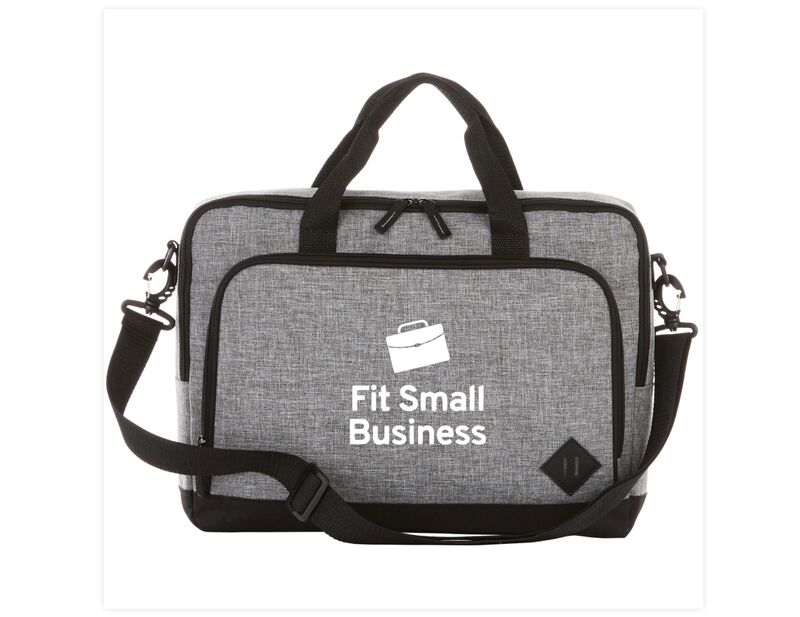

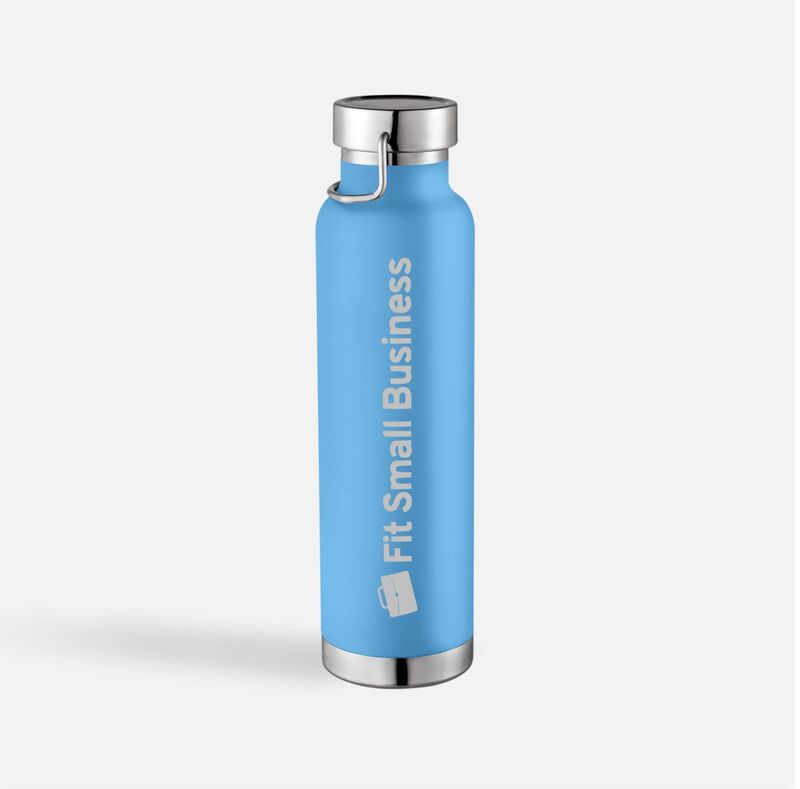
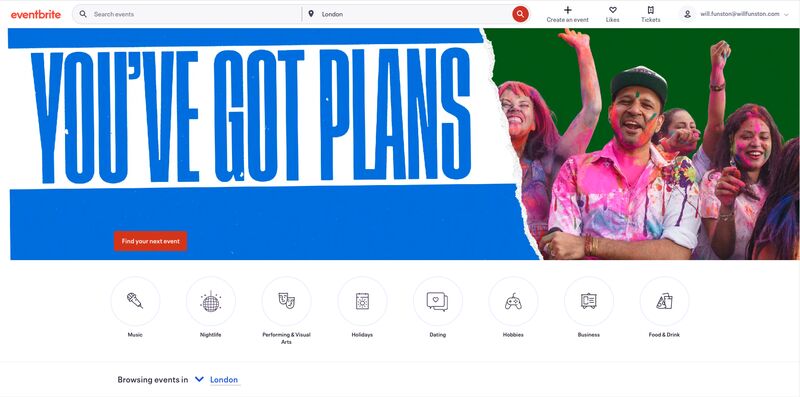
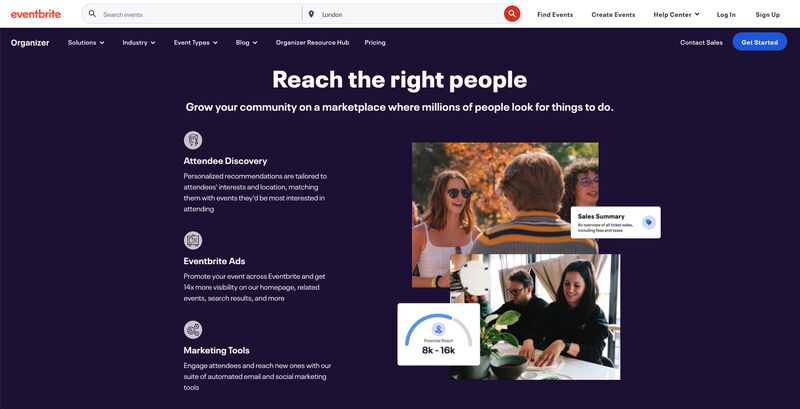
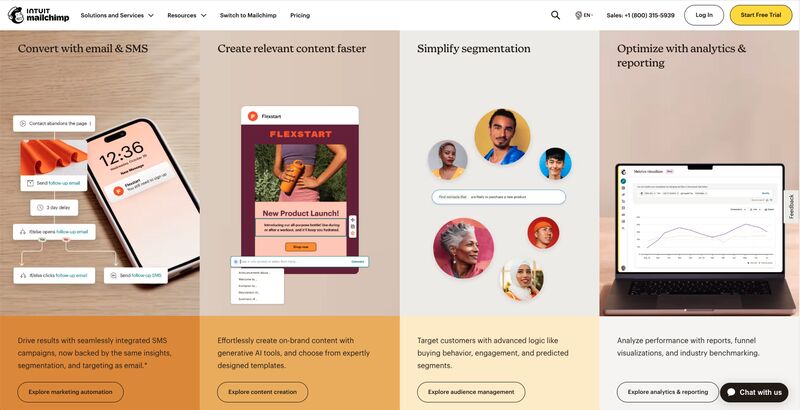
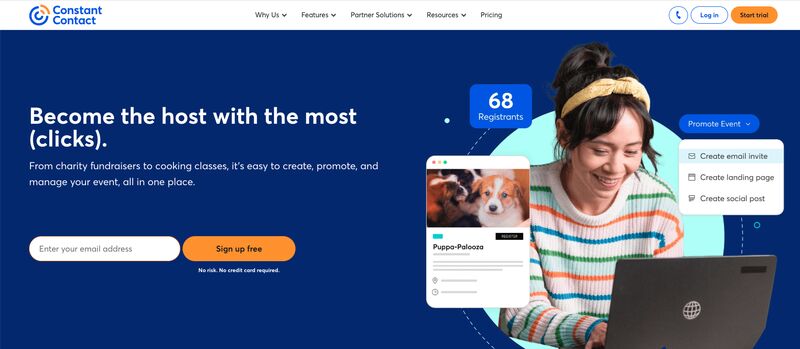
Social media is an easy and cost-effective channel for promoting events. If you’ve already built a social media presence, you may have an audience that’s already interested in learning about (and sharing) your event. Use the social platforms (Google, Facebook, LinkedIn, X, Instagram, etc.) you’ve successfully worked with in the past, and if you’re starting fresh, make sure the platforms and content you choose are appropriate for the audience.
A social media post on LinkedIn promoting the go-to-market (GTM) conference, Better Together, reposted by TechnologyAdvice (Source: LinkedIn)